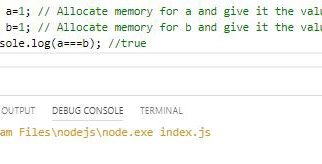
Prioritization is a talent, a skill, which comes with experience and also a laborious science. Is it easy to learn how to prioritize quickly?
It depends on the number of tasks and objectives, internal and external conditions of projects, products and the entire company.
If you want to be able to determine priorities correctly and work with a product backlog like a PRO, then you should be a successful strategist. There are many smart technologies to improve these skills. However, any method is effective in its context and can have absolutely no sense in applying to a particular product or service.
Before studding and applying any smart method, be sure that you know enough about common planning recommendations, such as:
- Determining the values ? even using your intuition, you may understand what will bring you more benefits and what will cause problems.
- Making lists will help to organize the whole day. Unload your thoughts to papers.
- Improving flexibility ? as it is always worthwhile to be ready to change priorities for factors beyond your control.
- Setting realistic, achievable and measurable goals.
Nowadays, product managers, business owners, team leaders and everyone who cares about company?s success have the opportunity to study and apply dozens of different powerful and interesting methodologies: from the simple Lean prioritization to the most complex methods and scientific approaches.
In Hygger University, we?ve described various techniques that are used by product managers all over the world.
Now we are able to study their popularity among users and readers, determining the number of views, likes, comments and sharing sessions. According to this simple statistics, the following top-5 prioritization techniques look most demand:
The Most Used Prioritization Techniques
Kano Model
This powerful methodology is well-known thanks to the efforts of the Japanese researcher Noriaki Kano who published his scientific work in 1984. It was an article where he combined many fruitful ideas for determining customer satisfaction with product features. The method is also called the ?Theory of attractive qualities?.
The model helps to clearly describe the satisfaction of what needs leaves customers indifferent, dissatisfied, or makes them totally satisfied.
Kano identified the following premises:
- The satisfaction with product features depends on the level of functionality provided. It?s about how well the features were implemented.
- All product features can be categorized, depending on how customers react to the level of functionality provided.
- Questionnaires help to determine how customers feel about these features.
Kano approach helps to determine relationships between the product update, the level of customer satisfaction and market dynamics.
There are core components of the quality profile, according to Kano:
- Basic components. They correspond to the mandatory characteristics of the product.
- Expected components. They correspond to the ?quantitative? characteristics of the product.
- Attractive ones. These components correspond to the characteristics of the product that are admirable. This looks like a surprise.
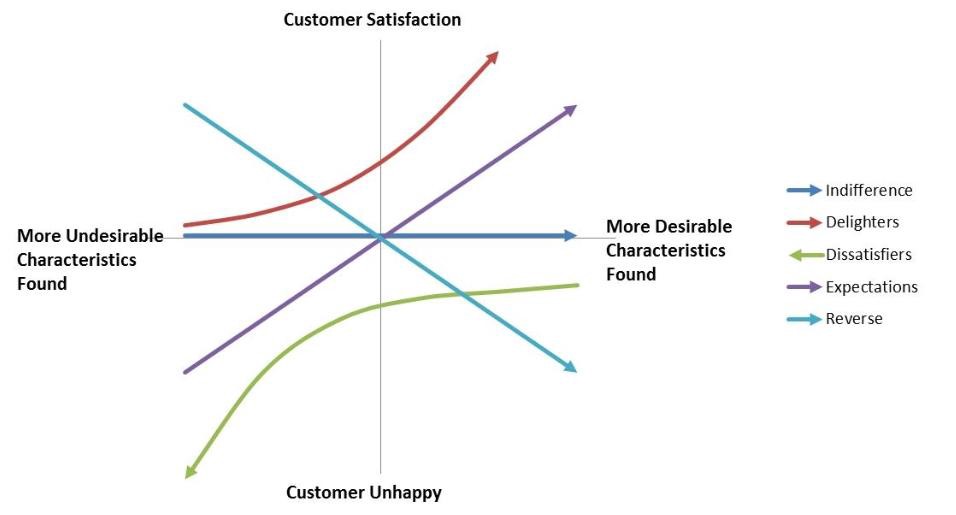
However, customers may change the requirements over time. A feature that is fascinating today will be a quality standard tomorrow and after a while may simply become an indispensable condition of quality.
MoSCoW Prioritization
In product development, there is always more to do than there is time. MoSCoW prioritization technique is used in management, business analysis, and software development. It helps to reach a common understanding with stakeholders.
Using the methodology, you may select which issues, tasks or objectives are Must have, Should have, Could have and Won?t have.
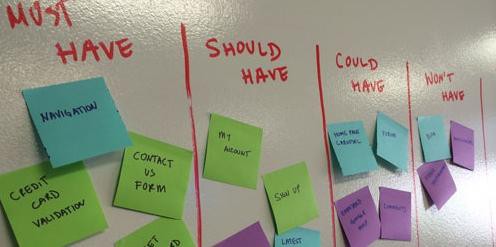
- Must have ? the requirements critical to the current delivery timebox. A project delivery should be considered a failure if even one Must have requirement is not included.
- Should have are requirements that important but not necessary for delivery in the current period of time. They are often not as time-critical as Must have.
- Could have are desirable but not necessary requirements. They can improve user experience or customer satisfaction for little development cost.
- Won?t have are the requirements that have been agreed by stakeholders as the least-critical, lowest-payback items, or not appropriate at that time. They are not planned into the schedule for the next delivery timebox.
As you can see, this approach offers a quick and easy solution for prioritization product issues. However, often such classification by categories may not be enough.
It is believed that MoSCoW technique is better suited for internal projects but not for products with a large number of customers.
Value vs Cost Technique
Value vs Cost is a rather common methodology with the advantage of also being very simple and easy-implemented.
Product features can be scored on their Value and Cost of implementation ? this is the main idea of the method. The features with the best ratios will have higher priority. This approach feels intuitive and is also embedded within other prioritization methodologies.
Value vs Cost method gives you an opportunity to maximize value delivery over time. For a given release timeframe, you work on the most valuable items you can fit in the period.
It can be visualized with the help of Value vs. Cost graph.
Plot all considered features with regards to their score in each dimension. Prioritization rankings will be visible as the slopes of the lines (from the origin to each feature). The higher the slope, the higher the priority.
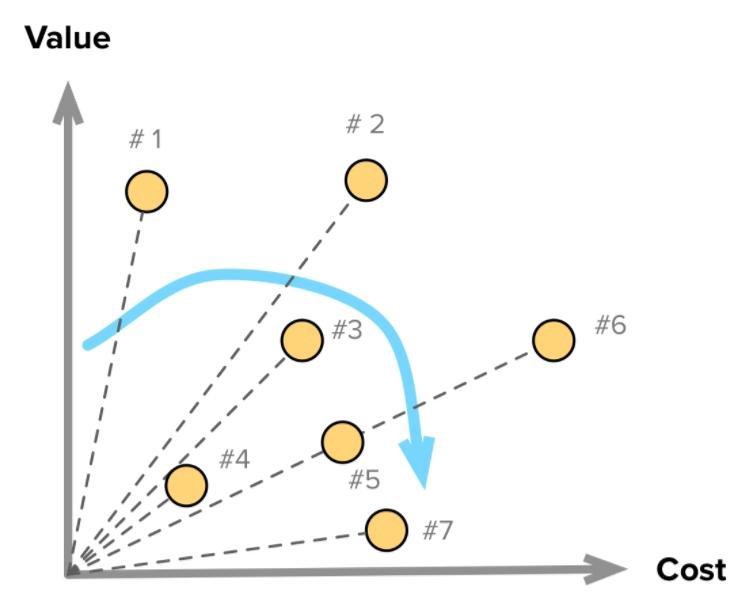
RICE Score
According to the abbreviation, RICE Methodology helps to identify Reach, Impact, Confidence and Efforts.
The technique is also popular and assists managers in determining priorities and getting great business results.
RICE Score model direct you and your team to ask the following questions:
- How many people will your project impact in a specific period? How many clients/users will feel the changes? It?s about Reach.
- How will your product impact your customers? It?s about Impact.
- Do you have valuable data that backs up your estimation? It?s about Confidence.
- What teamwork does the project require? It may include researching, developing, testing, designing, meetings, etc. And it all about Efforts.
Having estimated these factors, combine them into a single score and you?ll be able to compare projects at a glance. The result will measure the total impact per time worked.
RICE model really helps immensely when deciding between hard-to-compare ideas. With its help, you think about why a project idea will have an impact and about efforts that are needed to achieve it.
The RICE prioritization framework will help you make better-informed decisions about what to work on first.
Opportunity Scoring
The American researcher Anthony Ulwik derive the Opportunity Scoring method from the concept of Outcome-driven Innovation (ODI).
According to his scientific approach, people buy products and services to get some job done. That is about getting the expected result.
One of the main ideas of the method is that customers/users are not the best sources of solutions, as they are not experts.
However, their contribution is extremely important to understand the results that they want to obtain from the product or service.
You may create a list of desired results for the product with the help of custom research and other methods.
Then you need to ask customers to evaluate each result as well as how important it is for them. And then ? to find out the degree of satisfaction from 1 to 10 points.
It?s visualized in the formula:

It defines the most fruitful opportunities for innovative areas, including areas with a high degree of product importance and low level of satisfaction.
To visualize the results, a special chart can be used. It shows the better understanding of where the opportunities are.
From Theory to Practice
Any of these techniques can be strengthen with the applying of special visualization tools and product management services.
What are the tools for prioritization?
There are smart software solutions such as Hygger, RealtimeBoard, ProductPlan or other friendly services that were designed for large and small product teams to facilitate planning, scheduling, analyzing tasks and help to prioritize quickly.
One of them is Backlog Priority Chart in Hygger.io.
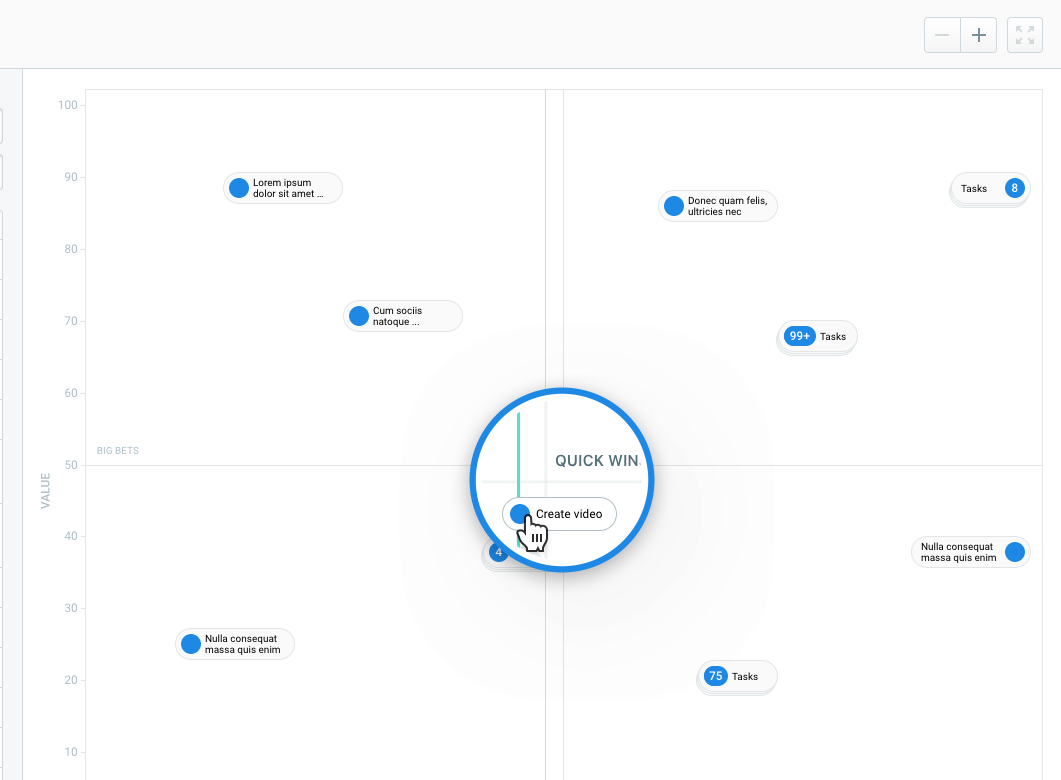
Using the chart, you?ll not lose your issues and a convenient Value & Efforts system with 4 special quadrants will help to systematize them.
- Quick Wins ? for ideas of prime order.
- Big Bets ? for ideas with high priority, but they can be performed after Quick Wins ideas.
- Maybes ? for ideas with less value and urgency. They can be postponed.
- Time Sinks ? for ideas that can be completely forgotten.
Hygger also allows structuring the backlog with universal Scrum and Kanban boards, labels and Swimlanes.
As a conclusion
All of these techniques have contexts in which they make sense to be used.
There is no an ideal option. You just have to choose whatever is more appropriate for your product, team, company, industry, and so on. Try, mix and match them. Discuss and make changes. After all, develop great products 🙂
How do you find these smart techniques for determining priorities? Have you ever tried them?
Would you like to dive into the other simple and complex prioritization methodologies? Feel free to comment on this post and I?ll prepare the additional list.

